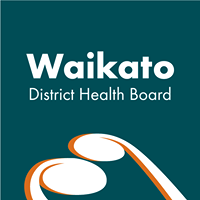New research is shedding light on the impact of COVID-19 Alert Levels on injury-related hospital admissions across the Midland region and how people were injured during lockdown.
The study by the Midland Trauma System (MTS), published in the New Zealand Medical Journal today, shows a marked decrease in admissions during Alert Levels 4 and 3 last year, but found it was short-lived as the country moved to levels 2 and 1.
It also revealed some significant fluctuations in the types of injuries presented to emergency departments at Midland hospitals.
The research team says the data from the study will help inform planning around demand and healthcare access for similar scenarios in the future.
The Midland region is made up of Bay of Plenty, Tairāwhiti, Taranaki, Lakes and Waikato DHBs which together cover a population of approximately 985,285 people.
The research covered the period of February 15 to July 11, 2020 and compared it to the average number of admissions during the same period between 2017 and 2019.
That timeframe covers pre-lockdown, the week of lockdown and the movement through all four alert levels. However, the research team focused on Alert Levels 4, 3, and 2 to try and exclude dramatic changes in behaviours as the region prepared to move into Level 4 restrictions and Level 1 which had practically no community restrictions.
Data showed a 36.7% drop in admission rates during Alert Level 4, while a 16% drop was seen during Alert Level 3.
In contrast, admissions rose by 17.8% in the pre-lockdown period of 15 February to 18 March. The reduction in patients during Alert Levels 4 and 3 was brief, with admissions rising by 6.5% in level 2 and 13.8% in the first month of Alert Level 1.
The hospitals saw an overall decrease in admission volumes of 18.3% across Alert Levels 4, 3, and 2.
Fewer men were admitted in 2020 compared with the previous years (a drop of 21.9%), and while there was a drop in presentations across all ages, the most significant reductions were in the 5-14, 15-24 and 65-74 groups.
The ways people were injured also changed. There was a 63% drop in pedestrian injuries, while cycling and motorbike-related admissions rose 11.9% and 2.2% respectively.
The researchers suggest the increase could have been a result of more new and returning cyclists taking up the hobby during the lockdown while there were fewer cars on the road.
Road traffic crashes typically account for the second highest number of injuries across the Midlands after falls.
Admissions of people injured in vehicle incidents dropped by 35.8%, coinciding with the significant restrictions on movement during Alert Levels 4 and 3. However, compared to the previous three years this is not considered a significant proportional change.
Perhaps unsurprisingly, there was an increase in injuries around the home with admissions up 28.3%. Injuries on footpaths increased by 37.9%.
There was a significant drop in injuries occurring at schools (down 75%), sports areas (down 79%) and in and on the water (down 71.4%).
The researchers say public health messages to essential workers to stay safe and keep pressure off the health system appear to have paid off. These messages were also relayed to the farming community which continued operating throughout lockdown.
Farm-related injuries increased by 1.7% during the research period.
"We were interested to see only a small increase in all injuries requiring hospital-level care occurring on farms, despite farmers and farm workers continuing their daily work-related activities during national-level restrictions," the researchers say.
Alert Level 2 and the first month of level 1 saw a spike in admissions compared to the previous three years.
This rebound coincided with a campaign by DHBs to catch up on healthcare procedures such as elective surgeries which were temporarily suspended during lockdown.
The report says the "potential resource squeeze" as a result of the rebound in admissions must be taken into account when planning for future lockdown scenarios.
This research paper expands on an earlier report by the MTS in April 2020 which looked at the change in the number and kinds of injuries at Waikato Hospital during the first two weeks of Alert Level 4.



 Gordon Campbell: On The Looming Conflicts Within The Trump Presidency
Gordon Campbell: On The Looming Conflicts Within The Trump Presidency New Zealand Customs Service: Customs Celebrates Successes On International Customs Day
New Zealand Customs Service: Customs Celebrates Successes On International Customs Day Imperial Brands: Seizures Of Black Market Tobacco Show Strong Policy Action Needed From Government
Imperial Brands: Seizures Of Black Market Tobacco Show Strong Policy Action Needed From Government PSA: Axing Of Callaghan Innovation, Loss Of 500 Jobs Already Makes Mockery Of Latest Reform
PSA: Axing Of Callaghan Innovation, Loss Of 500 Jobs Already Makes Mockery Of Latest Reform NZCTU: Working People Will Pay For Static Inflation
NZCTU: Working People Will Pay For Static Inflation ACT New Zealand: Too Early For A Victory Lap, But Hope Is On Its Way
ACT New Zealand: Too Early For A Victory Lap, But Hope Is On Its Way Greenpeace New Zealand: Trump Exit From Paris Agreement Means NZ Must Rally With World To Save Climate
Greenpeace New Zealand: Trump Exit From Paris Agreement Means NZ Must Rally With World To Save Climate


